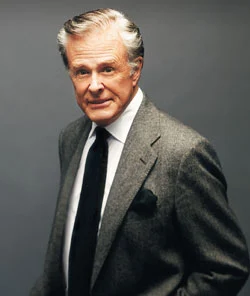 Mitchell Herbert (Herb) Ellis was an American jazz guitarist died he was 88.
Mitchell Herbert (Herb) Ellis was an American jazz guitarist died he was 88. | (August 4, 1921 - March 28, 2010[1]) |
Growing up on the outskirts of Dallas, Texas, Ellis first heard the electric guitar performed by George Barnes on a radio program. This experience is said to have inspired him to take up the guitar. He became proficient on the instrument by the time he entered North Texas State University as a music major. Ellis majored in music, but because they did not yet have a guitar program at that time, he studied the string bass. Unfortunately, due to lack of funds, his college days were short lived. In 1941 Herb dropped out of college and toured for 6 months with a band from the University of Kansas.
In 1943 joined Glen Gray and the Casa Loma Orchestra and it was with Gray's band that he got his first recognition in the jazz magazines. After Gray's band, Ellis joined the Jimmy Dorsey band where he played some of his first recorded solos. Ellis remained with Dorsey through 1947, traveling and recording extensively, and playing in dance halls and movie palaces. Then came a turnabout that would change Ellis's career forever. Then, as pianist Lou Carter told journalist Robert Dupuis in a 1996 interview, "The Dorsey band had a six-week hole in the schedule. The three of us had played together some with the big band. John Frigo, who had already left the band, knew the owner of the Peter Stuyvesant Hotel in Buffalo. We went in there and stayed six months. And that's how the group the Soft Winds were born."

The Soft Winds was fashioned after the Nat King Cole Trio. They stayed together until 1952. Herb Ellis then joined the Oscar Peterson Trio (replacing Barney Kessel), forming what Scott Yanow would later on refer to as "one of the most memorable of all the piano, guitar, and bass trios in jazz history".
Ellis became prominent after performing with the Oscar Peterson Trio from 1953 to 1958 along with pianist Peterson and bassist Ray Brown. He was a somewhat controversial member of the trio, because he was the only white person in the group in a time when racism was still very much widespread.
In addition to their great live and recorded work as the Oscar Peterson Trio, this unit served as the virtual "house rhythm section" for Norman Granz's Verve Records, supporting the likes of tenormen Ben Webster and Stan Getz, as well as trumpeters Dizzy Gillespie, Roy Eldridge, and Sweets Edison and other jazz stalwarts. With drummer Buddy Rich, they were also the backing band for popular "comeback" albums by the duet of Ella Fitzgerald and Louis Armstrong.
 The trio were also the mainstays of Granz's Jazz at the Philharmonic concerts as they swept the jazz world, almost constantly touring the United States and Europe. Ellis left the Peterson Trio in November 1958, to be replaced not by a guitarist, but by drummer Ed Thigpen. The years of 1959 through 1960 found Ellis touring with Ella Fitzgerald.
The trio were also the mainstays of Granz's Jazz at the Philharmonic concerts as they swept the jazz world, almost constantly touring the United States and Europe. Ellis left the Peterson Trio in November 1958, to be replaced not by a guitarist, but by drummer Ed Thigpen. The years of 1959 through 1960 found Ellis touring with Ella Fitzgerald.The three provided a stirring rendition of "Tenderly" as a jazz improvisational backdrop to John Hubley's 1958 cartoon The Tender Game, Storyboard Film's version of the age-old story of boy falling head over heels for girl.[2]
With fellow jazz guitarists Barney Kessel, Charlie Byrd and Joe Pass, he created another ensemble, the Great Guitars.
To see more of who died in 2010 click here
























